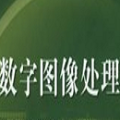Learning at a Distance 学于遐迩 | 学术人生
In this brief note, I summarize how and what I learnt from Professor Thomas (Tom) Huang for nearly four decades. I consider myself a student of Tom at a distance, in that I was not a direct student of his, and did not write any papers with him. But Tom influenced me through his papers, lectures, direct and indirect mentorship. He also promoted me in various forums by saying good words about my work.
我学习黄煦涛教授(Prefessor Tom Huang)近四十载,此短文概述了我学习的心得体会。我既非他的正式学生,亦未曾与他共撰文章,但我仍认为是他的学生。不同的是,我学于遐迩,从他的文章中,在他的讲课里,以及来自他的直接或间接的指导。他也在不同的公开论坛上赞赏我工作以此提携我。
I first saw Tom in Spring 1978 at Purdue University, where I did my doctoral work. I attended many of his lectures on digital image processing. Tom had just returned from a sabbatical in Germany. I was quite impressed by Tom’s lucid style of explaining image processing fundamentals. The young ones should know that in 1978, image processing was till a new field with lot of emphasis on image compression and restoration. Tom had just finished some interesting work on coding of two-tone images then. What I still remember is that Tom would walk into the class with a cup of coffee and may be a small piece of paper with some equations. Once in a while he will take a sip of coffee and continue lecturing, occasionally looking at the sheet of paper he brought. He never carried any notes to his classes. The handout on FFT that Tom gave to his students is something to be preserved.
1978年春,在我读博士的普渡大学里我首次遇见Tom。其时Tom刚从德国学术休假完回来,教我们数字图像处理课程。他解释图像处理的基本原理简洁明晰,此等教学风格令我印象尤其深刻。1978年时的图像处理尚是新兴领域,重于图像压缩和恢复。他当时刚完成了双色图象的编码问题,非常有意思。我依然记得Tom走进教室的情景 —— 手握咖啡一杯,有时携纸一张,上书公式若干,但从不带笔记。偶尔,他嘬一口咖啡;间或,他瞄一眼纸张。他发给学生们的快速傅立叶变换(FFT)讲义绝对是珍藏品。
Tom moved to UIUC in 1980 and since then, I saw him frequently at various computer vision and pattern recognition conferences. When I moved to USC in 1981, Professor Sandy Sawchuk and I revised the collection of digital image processing papers edited by Prof. Harry Andrews for the IEEE Computer Society Press. As many image processing researchers were migrating towards image analysis and computer vision, we brought out two volumes, one on image processing and the other on image analysis. This effort gave me an opportunity to read some of the pioneering papers on structure from motion (sfm) that Tom co-authored with his students and visitors. The edited collection on image analysis included some of these sfm papers from Tom’s group. After reading Tom’s papers, I got the inspiration to extend two-frame based sfm algorithms to long sequences. This work did in collaboration with Ted Broida and other students kept me busy for a while. At various meetings, I had several opportunities to discuss my work with Tom. Tom encouraged me in my efforts to develop robust sfm algorithms.
Tom于1980年搬到了伊利诺伊大学香槟分校。自此,我常见他于各种计算机视觉和模式识别的会议中。在1981年搬到南加州大学后,我和Sandy Sawchuk教授为IEEE Computer Society Press重新收录了数字图像处理的文章,此项工作原先是Harry Andrews教授做的。基于当时有许多图像处理研究者在转型做图像分析和计算机视觉,我们编辑了两卷书,一卷是关于图像处理的,另一卷是关于图像分析的。这次努力让我有机会读到了许多由Tom和他的学生们访问学者们合写的、关于运动恢复结构(structure from motion,sfm)方面的开创性文章。其中不少文章被数字图像处理之图像分析卷采纳了。读了Tom的文章后,我得到了启示,和Ted Broida以及我别的学生们把基于两幅图像的sfm算法延伸到了多幅图像,为此我们忙碌了好一阵子。其间,我趁会议和Tom有不少机会讨论我的工作,他鼓励我要努力开发出稳健的sfm算法。
Tom is a scholar’s scholar. His papers are innovative, clear and almost always broke new grounds. In fact, when reading Tom’s papers, one can almost hear him talk through the contents of the paper as they were written in a lucid style, despite having tons of equations. He is a fantastic lecturer and presented the material with a humorous touch.
Tom是学者中的学者。他的文章创新充沛,清楚明晰,多为拓疆之作。读其文,若闻其声,概因其文笔简明,尽管公式比比皆是。他教学魅力十足,演讲阐述带人潜入幽默的意境。
Tom is a perpetual learner. When most attendees at conferences stay for a couple of talks in a few sessions and leave the room, I have seen Tom stay in sessions that interested him, keenly listening to the talks, often writing some notes in the conference program books. This is a good practice to emulate by all of us.
Tom其人,学而不辍。参加学术会议,许多人听若干演讲就离开,Tom则不同。他久滞会场,专心听讲,常常笔记。这实值得我辈仿摹。
Tom is a kind-hearted person. In spite of being a busy person, he must have written numerous (hundreds!) letters recommending others for tenure, promotion, and various awards and recognitions. This is something to emulate too.
Tom之心,仁慈善良。他虽忙不得暇,仍不辞辛劳地写了数以百计的推荐信,为了别人的终身职位、升迁、奖励和得到肯定。这亦应获吾等仿效。
Tom also demonstrated a perfect balance between his family life and career, which is something to learn from the master. While at Purdue, I have seen Tom go home for lunch around noon, whenever he is in town and does not have a lunch meeting. Most of us who go to conferences are happy to see Tom and Margaret as a couple engaging their colleagues and friends at lunches, dinners and other social events. By example, Tom demonstrated the importance of balancing the family life and his busy professional life.
Tom亦是大师,完美地平衡家庭与职业。在普渡,我常见他中午回家用餐,不开中午会。我们多数人在参加会议时会瞧见Tom、Margaret夫妇与同事朋友们一起用餐或出席社会活动的幸福场景。对于平衡家庭与职业的重要性,Tom以自己的亲身例子作了最好的阐释。
I spent some wonderful days with Tom and Margaret in January 1988 when we were at a conference in Bangalore, India.
1988年一月,我与Tom 、 Margaret在印度班加罗尔一起开会,共同渡过了一段美好的日子。
Scholars like Tom come rarely. All of us who have had the opportunity to interact with Tom one way or another must consider ourselves very lucky to have known and learned from Tom. I surely did learn many things that have helped my career and personal life, including eating oatmeal for breakfast, which is something that Tom is known for!
师从Tom,我学到不计其数,无论是职业上,还是生活中,甚至是他的“闻名作” —— 早餐吃燕麦。学者如斯,何其少哉!有师若此,何其幸哉!
[Rama Chellappa著、周少华译]
Prof. Rama Chellappa is a Distinguished University Professor and a Minta Martin Professor of Engineering and Chair of the ECE department at the University of Maryland. Prof. Chellappa is a recipientof an NSF Presidential Young Investigator Award and four IBM Faculty Development Awards. Prof. Chellappa received the K.S. Fu Prize from theInternational Association of Pattern Recognition (IAPR). He is a recipient of the Society, Technical Achievement and Meritorious Service Awards from the IEEE Signal Processing Society and four IBM Faculty Development Awards. He also received the Technical Achievement and Meritorious Service Awards from the IEEE Computer Society. At UMD, he received college and university level recognitions for research, teaching, innovation and mentoring of undergraduate students. In 2010, he was recognized as an Outstanding ECE by Purdue University. He received the Distinguished Alumni Award from the Indian Institute of Science in 2016. Recently, he received the inaugural Leadership Award from the IEEE Biometrics Council. Prof. Chellappa served as the Editor-in-Chief of PAMI. He is a Golden Core Member of the IEEE Computer Society, served as a Distinguished Lecturer of the IEEE Signal Processing Society and as the President of IEEE Biometrics Council. He is a Fellow of IEEE, IAPR, OSA, AAAS, ACM and AAAI and holds five patents. His current research interests span many areas in image processing, computer vision and pattern recognition.
版权声明:本原创文章版权属于《视觉求索》公众号。任何单位或个人未经本公众号的授权,不得擅自转载。联系授权转载请通过订阅公众号后发消息或电邮visionseekereditors@gmail.com。





